
When it comes to ornamental grasses and their flowers, also known as inflorescences, it’s the subtle things that add up. Sure, they don’t have the in-your-face flower power of a peony, but the synergy of their texture and color is what makes them so showy—and, unfortunately, ephemeral. Grasses have a tendency to evolve quickly right in front of your eyes, going from clumps of foliage to spectacular flags of color waving in the wind seemingly overnight. In fact, the movement of their flowers is how ornamental grasses truly take your breath away.
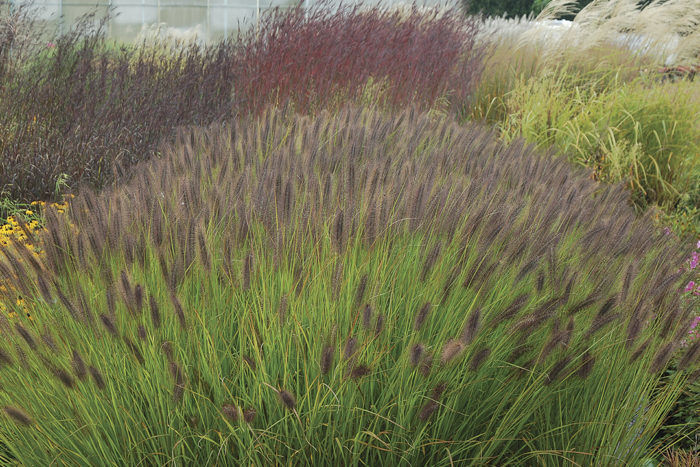
During the season, grasses provide a backdrop and strong textural contrast to shrubs and other broad-leaved perennials, but when they send up their plumes, they can steal the show. These plants may not always be the main meal of the garden, but they are like the spices that give it taste (now if only we could eat and drink them like their cousins barley, wheat, rice, and corn). The following are some of my top picks for flowering grasses, ones that you won’t be the least bit tempted to cut back in fall because you’ll want to keep the show going for as long as possible.
Korean feather reed grass is beautiful and super tough
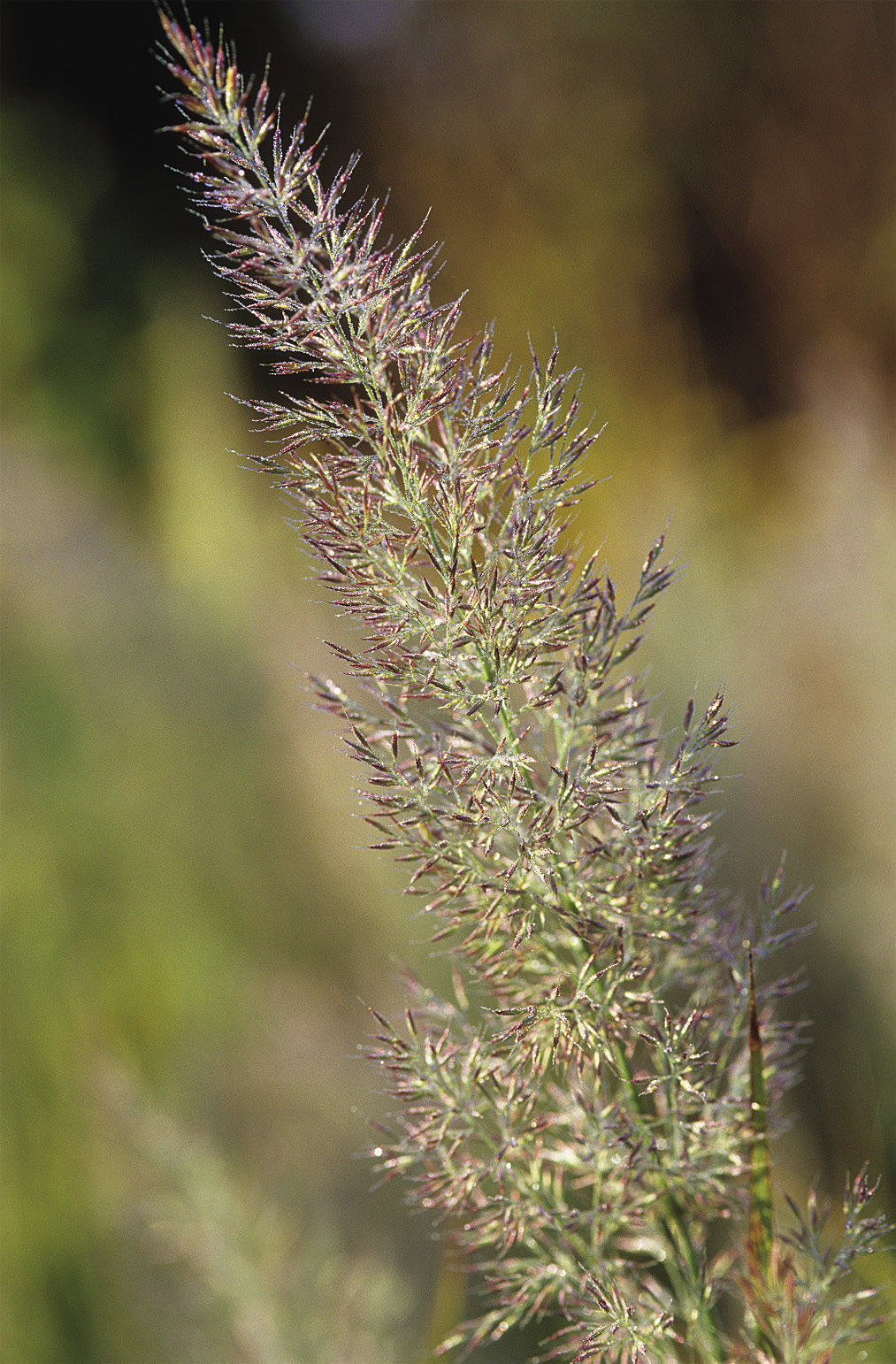
Calamagrostis brachytricha
The growing popularity of this cousin to ‘Karl Foerster’ (C. × acutiflora ‘Karl Foerster’) is understandable. Its adaptable nature allows it to work in a variety of conditions. I’ve even seen it growing well on the green roof at the Chicago Botanic Garden in just a few inches of soil. Fresh green foliage forms a relatively medium-size clump before the flowers emerge shyly in late summer from the rolls of foliage, like a sleeping beauty, almost unexpected. The shape of the flower is like a spear, measuring 2 to 3 inches wide and more than a foot long. Initially, the inflorescences have a subtle pink tone to them. As the season winds down, the color lightens to a creamy gravy color. Yum! Korean feather grass can reseed, so if you don’t want babies, you may want to deadhead before winter. Luckily, the seed heads dry nicely for indoor arrangements.
USDA Hardiness Zones: 4–9
Size: 3 to 4 feet tall and 2 to 3 feet wide
Conditions: Full sun; moist, well-drained soil
Gold dew tufted hair grass looks like it just got a $100 hairdo
Deschampsia cespitosa ‘Goldtau’
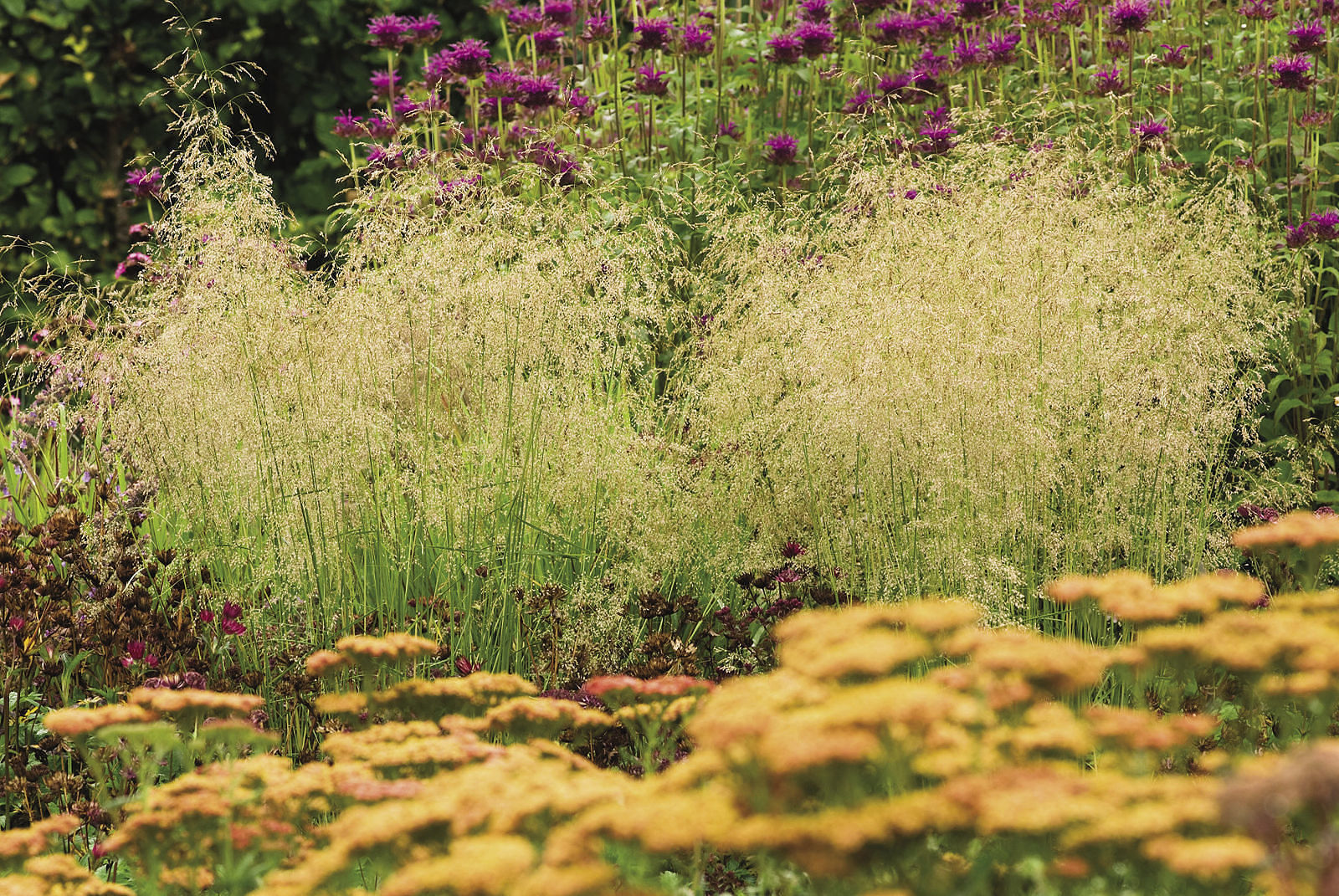
The name of this short but showy ornamental grass says a lot. At peak bloom in early summer, its clusters of golden yellow sprays look like bundled tufts of blonde hair. In time, the color lightens to that of a ginger root. Before the flowers come, the parsley green, ridged but narrow foliage forms a clean, green mound. Gold dew tufted hair grass is the perfect size for smaller spaces and pairs well with early spring bulbs and other small-to-medium-size, late-spring to summer perennials like ‘Pocahontas’ penstemon (Penstemon digitalis ‘Pocahontas’, Zones 3–8).
Zones: 4–9
Size: 2 to 3 feet tall and 1 to 2 feet wide
Conditions: Full sun to partial shade; moist, rich soil
Drooping sedge is unlike any sedge you’ve seen before
Carex pendula
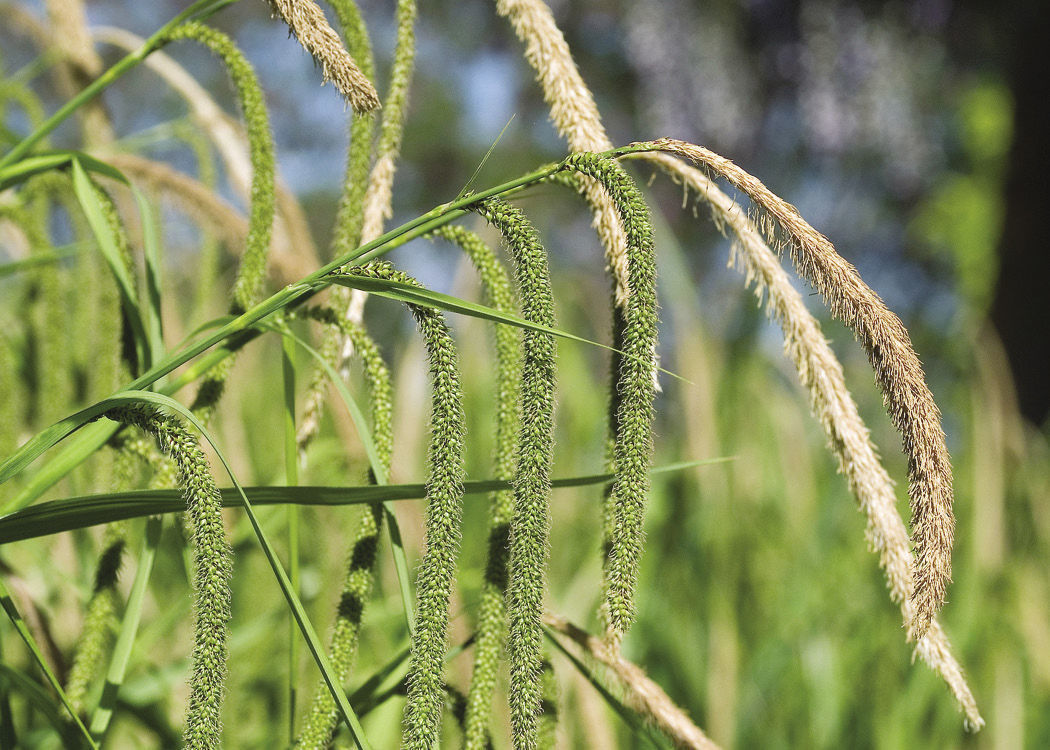
So many sedges are grown strictly for their foliage. This one is no exception, but when you add the dramatic, 5-foot-high stems of pendulous yellow flowers, it’s perfection—like adding lemon peel to the edge of a cocktail. The foliage of drooping sedge is semi-evergreen and emerges from triangular stems. Flowering begins in early summer; the female flowers are brown, while the showier mustard yellow male flowers hang down 8 to 10 inches. Later, as the flower stems continue to lengthen, the entire seed head will turn brown. Overall, the plant has a vase-shaped habit, so it will need room. Drooping sedge can be grown easily from seed if you can’t find plants at the nursery.
Zones: 5–9
Size: 4 to 5 feet tall and 5 feet wide
Conditions: Partial shade; moist, fertile soil
‘Poul Petersen’ purple moor grass is the perfect transitional plant
Molinia caerulea ‘Poul Petersen’
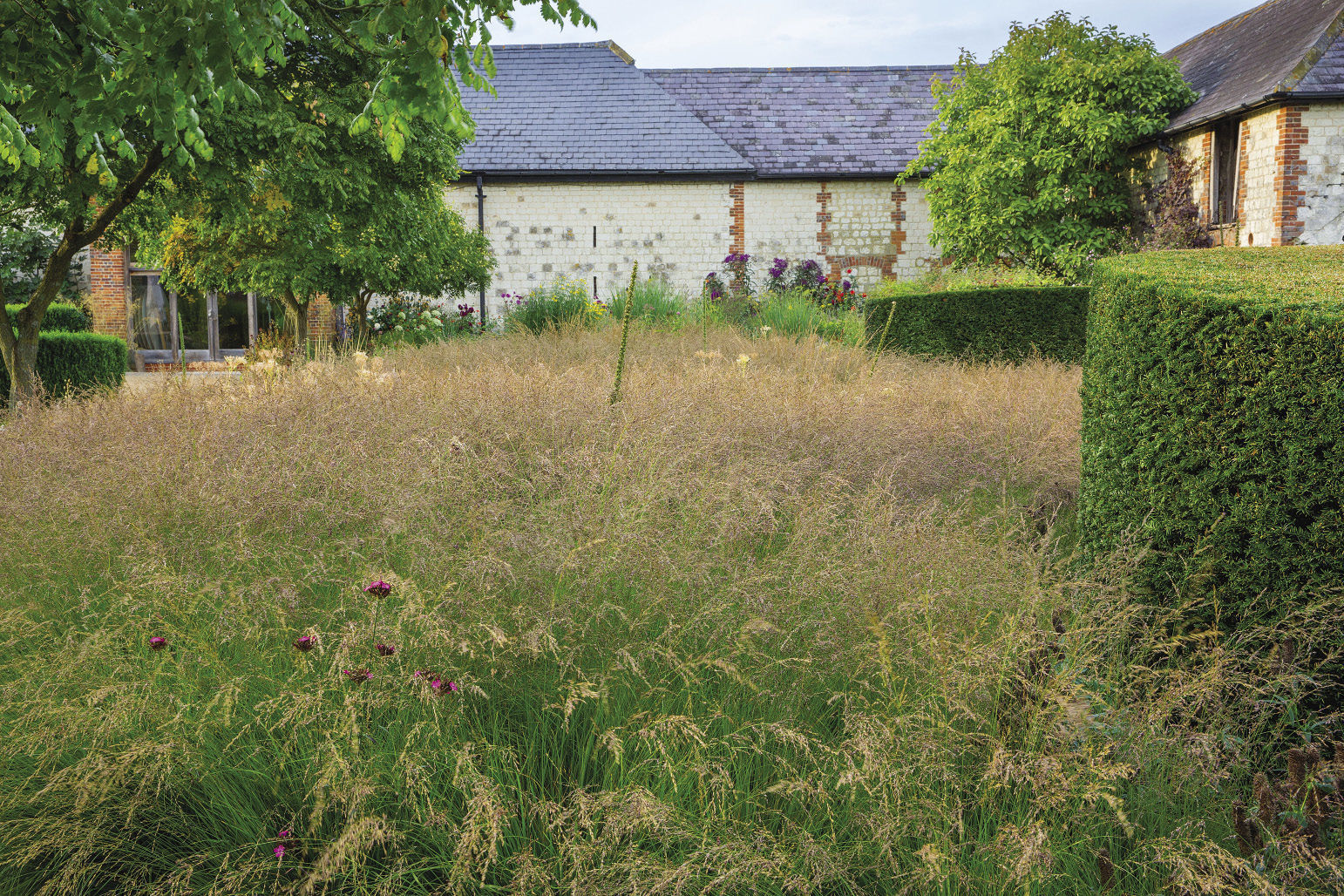
This may be the new standard in medium-size grasses. Moor grasses are cool-season grasses that bloom in summer. ‘Poul Petersen’ purple moor grass initially sports nearly black flowers on 3-foot-long stems. Eventually, the blooms fade to golden-tan seed heads and stems. This newer cultivar has slightly wider green foliage compared to many of the other varieties on the market. The upright habit makes it useful in mass plantings, especially if you want to tuck in some colorful companion plants, because this grass isn’t a thug to its neighbors. I’ve seen it peppered with yellow foxglove (Digitalis grandiflora, Zones 3–8) and clusterhead pink (Dianthus carthusianorum, Zones 5–10) in Piet Oudolf’s garden, the Barn at Bury Court. The size of ‘Poul Petersen’ purple moor grass makes it a great transitional grass from the short plants to the tall plants.
Zones: 4–9
Size: 3 feet tall and 2 feet wide
Conditions: Full sun; moist soil
The movement of their flowers is how ornamental grasses truly take your breath away.
With purple tufted fescue, the blue foliage is secondary
Festuca amethystina ‘Superba’
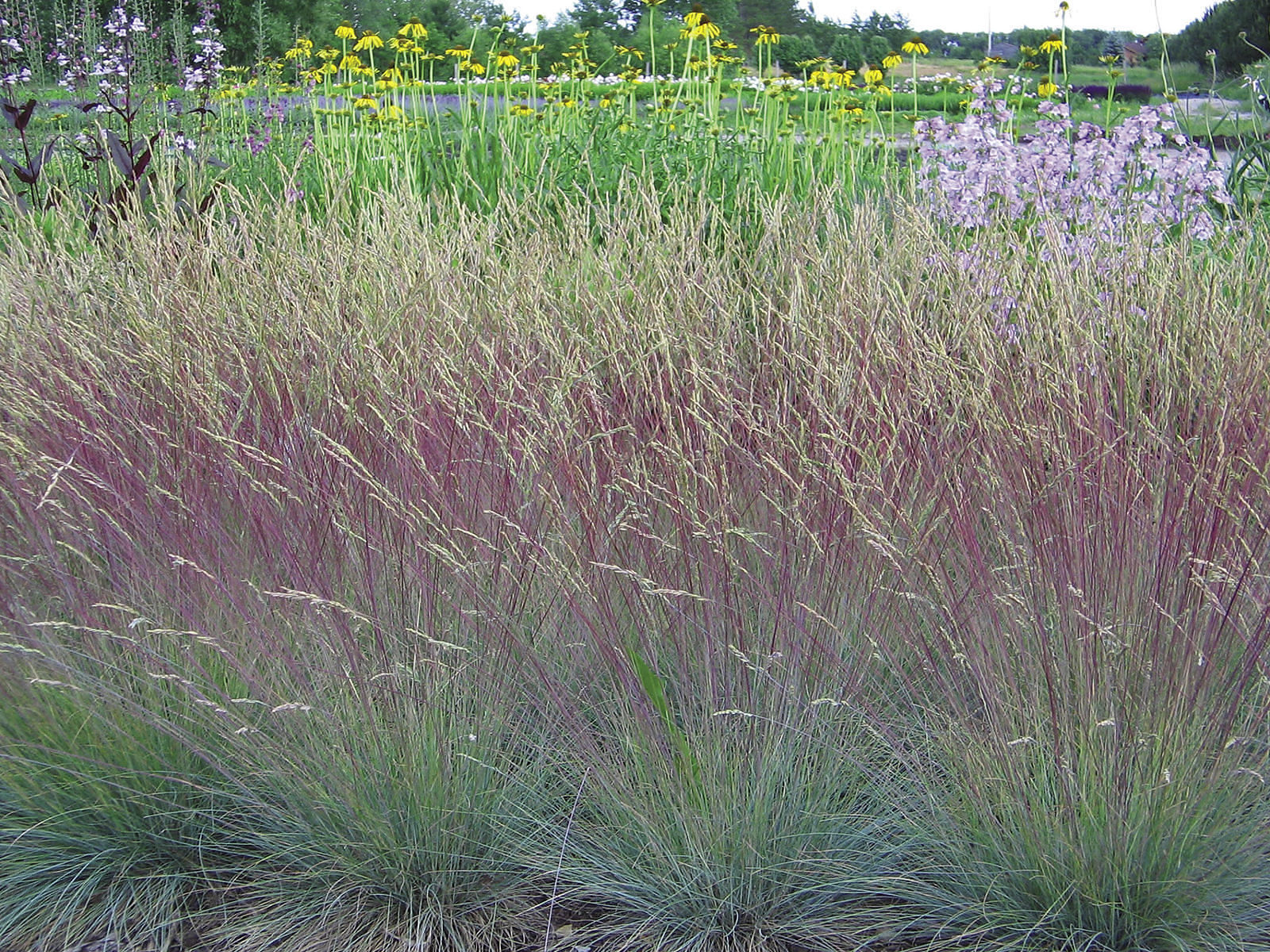
When you think of fescue grasses, you probably think of blue foliage—not flowers. Well, this variety does have thinner blue foliage, but it’s the showy pink highlights around the flowers that might make you forget it’s a grass. If all ornamental grasses looked like this, they’d be even more popular. The flowers are initially like all other fescues: outward facing and tan. But by early summer, the stems just below the flowers begin to take on a blush of pink, which is incredibly eye catching. Purple tufted fescue is more tolerant of average garden conditions and longer lived than other varieties, too. I grow mine in a gravel garden, where it blends in well with other short grasses.
Zones: 4–10
Size: 18 to 24 inches tall and 24 to 28 inches wide
Conditions: Full sun; moist, well-drained soil
‘Red October’ big bluestem sports lovely blooms and blades
Andropogon gerardii ‘Red October’
This might be the cayenne pepper of the garden meal. ‘Red October’ big bluestem emerges early in spring with green foliage edged and tipped with a reddish-purple. As the season progresses, it’s just the tips of the foliage that are colored. In the heat of summer it can even turn a chalky green entirely. Soon after, when cool nights begin, the plant bolts to 6 feet tall with its unique, three-part flowers. The bloom on this variety is maroon (giving this form a darker color compared to the species) with golden yellow pollen that dangles downward. The three part flower is where the plant’s common name, turkey foot, comes from because it resembles one. As nights turn colder, the plant switches colors once again becoming more scarlet and giving a dramatic last call to the season.
Zones: 4–9
Size: 4 to 6 feet tall and 2 to 3 feet wide
Conditions: Full sun; well-drained soil
‘Red Rocket’ fountain grass is known for its perfect timing
Pennisetum alopecuroides ‘Red Rocket’
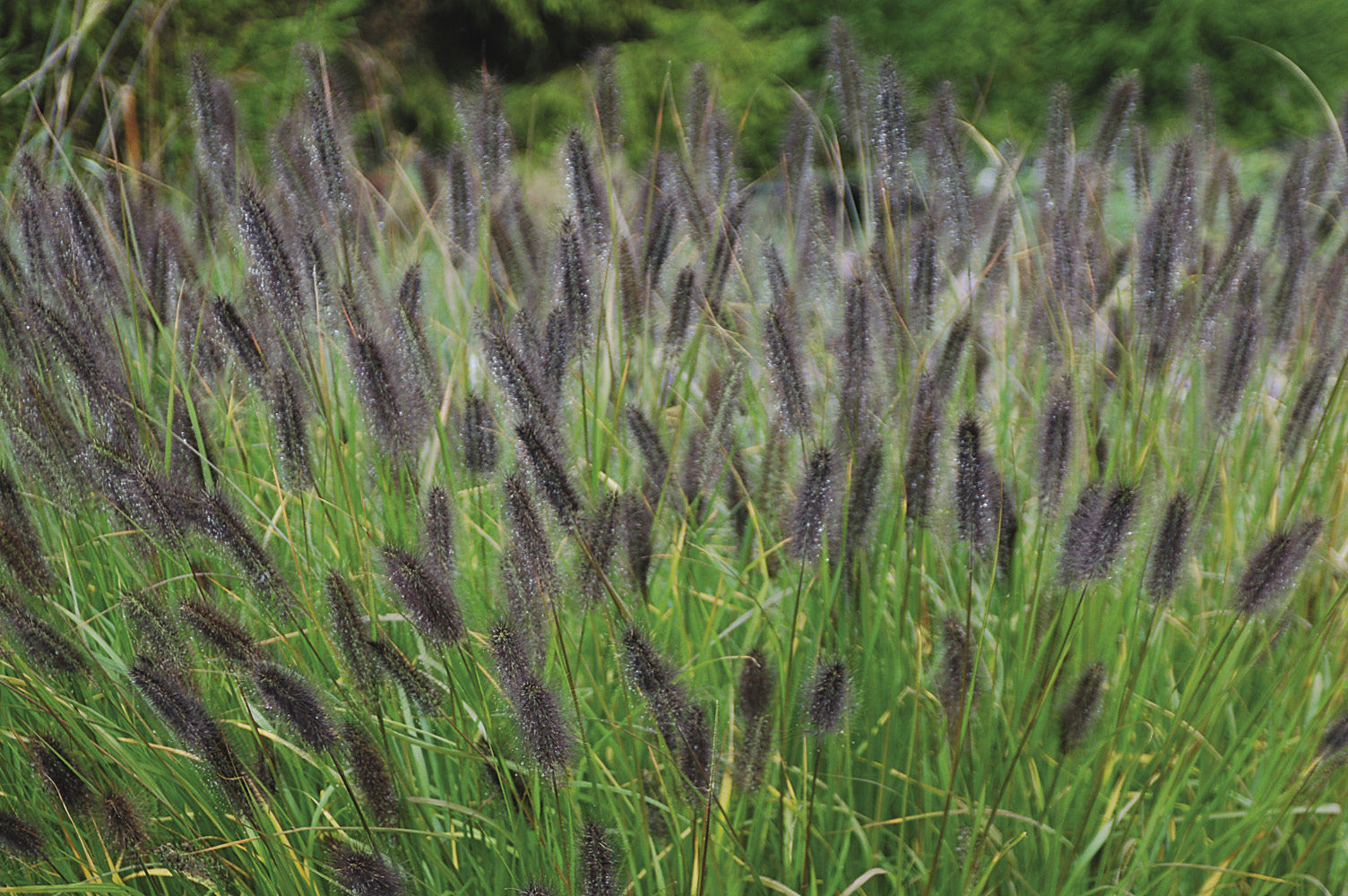
If you like your fountain grasses on the red side, this is the darkest one yet. Compared to the popular ‘Red Head’ fountain grass (P. alopecuroides ‘Red Head’), this new cultivar has a more manageable size. The dark-colored bottlebrush flowers, which rival the black of a vanilla bean, peak just before the killing frost or freeze. Even though the flowers hang on into winter, I do recommend deadheading because reseeding can be rampant with fountain grasses.
Zones: 4–9
Size: 3 feet tall and 4 feet wide
Conditions: Full sun; well-drained soil
Ruby muhly grass has long-term staying power
Muhlenbergia reverchonii
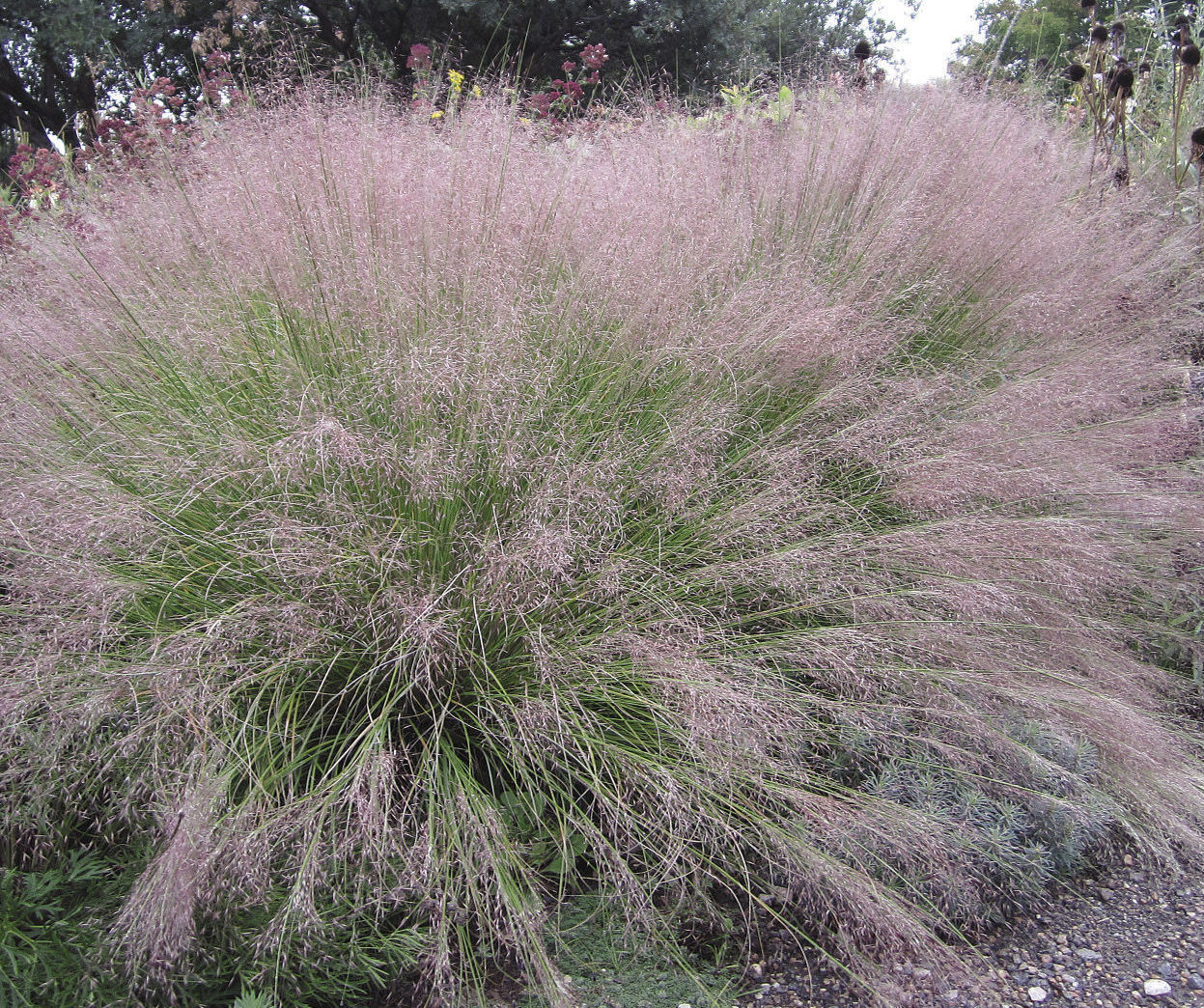
Ruby muhly grass is native to Oklahoma and into Texas, but it grows in a much wider range of conditions than the Southern Plains offer. That’s good news for those looking to fill a site with dry or moist areas with fluffy pink clouds of inflorescences. This warm-season grass sports thin, gray-green foliage before the flowers cover them up in midsummer. After the pink, sprinkles-like flowers fade, the tan mass of stems and seed heads remains into winter, giving this grass a long period of showiness. This up-and-coming plant is just becoming more widely available.
Zones: 5–9
Size: 2 to 3 feet tall and 2 feet wide
Conditions: Full sun; well-drained soil
‘Graziella’ maiden grass has blooms like cotton candy
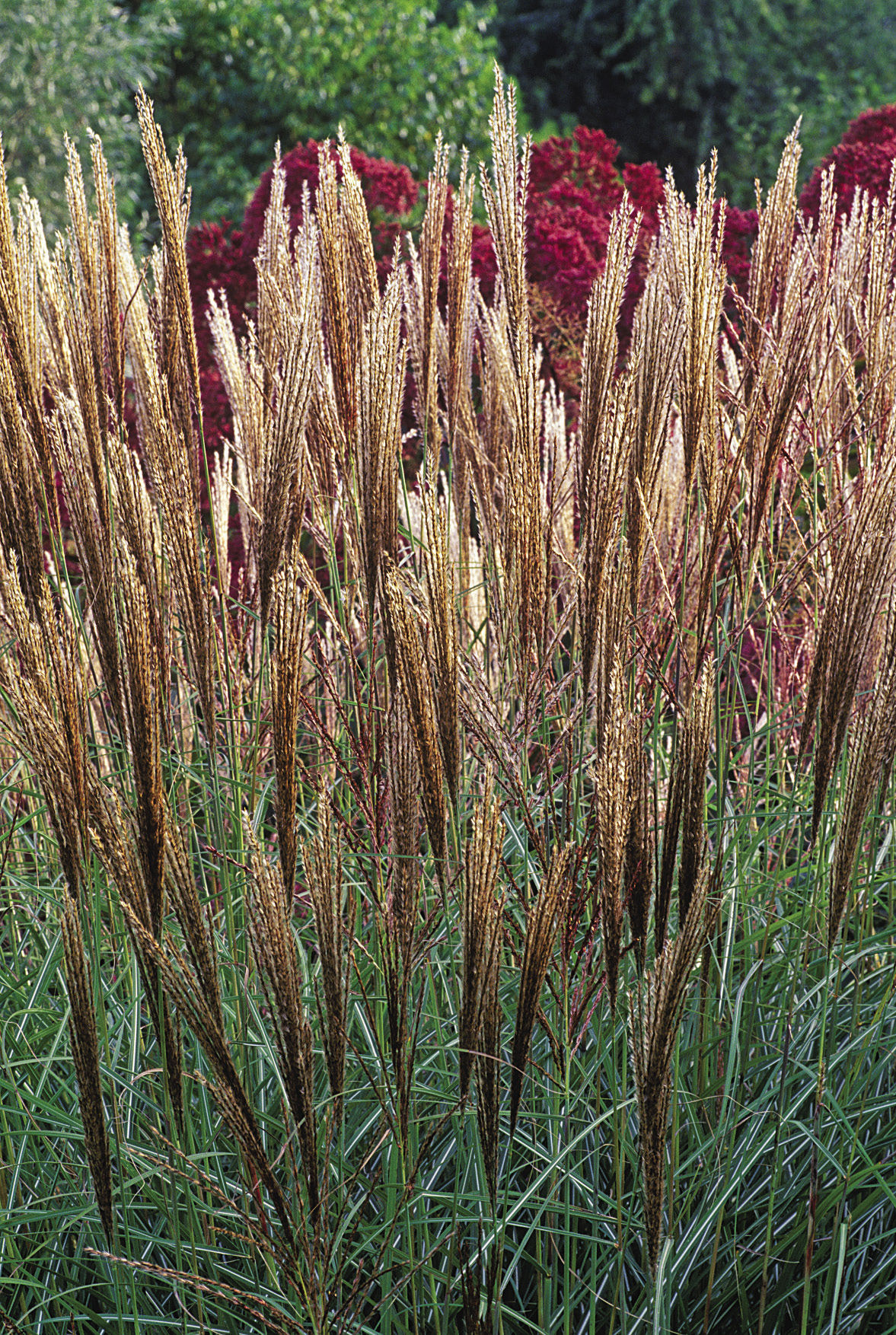
Miscanthus sinensis ‘Graziella’
This beauty has been my favorite silver-colored grass since I started growing it in the ’90s. ‘Graziella’ has similar thin, upright and arching foliage to the more popular ‘Gracillimus’ (M. sinensis* ‘Gracillimus’), but ‘Graziella’ both flowers earlier and has a heavier bloom than its cousin. Upon emerging in late summer, the flower color is cinnamon red (pictured) but quickly dries to a fluffy silver fan that looks like pieces of cotton candy. Maiden grasses are, funny enough, distant relatives of sugarcane.These substantial plants stand tall, with sharp-edged blades that have an ornamental strip of silver down the center. In certain areas of the country, some maiden grasses are considered invasive, so if you’re looking for a sterile option, consider ‘Scout’ (M. sinensis* ‘Scout’).
Zones: 5–9
Size: 5 to 6 feet tall and 3 to 4 feet wide
Conditions: Full sun; well-drained soil
*This plant is considered invasive in some areas.
No Flopping Allowed!
Try these tips to get your grasses to straighten up.
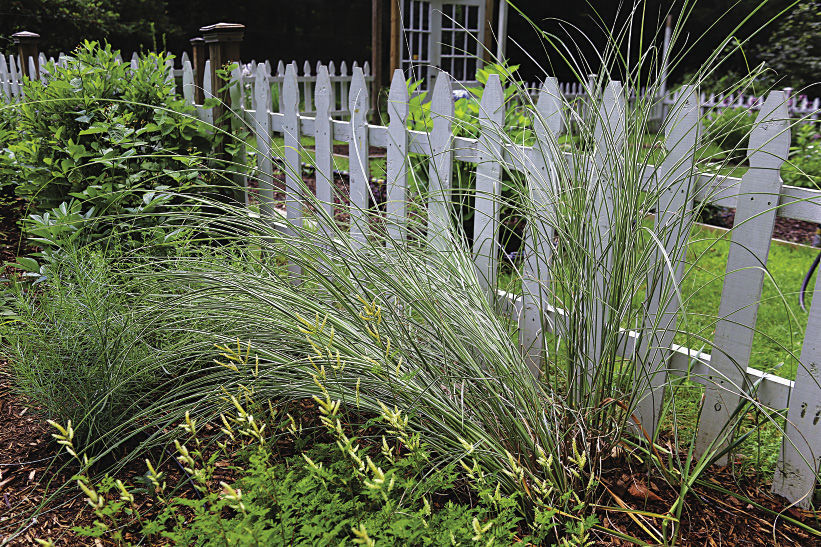
If your grasses are not standing up in the garden, chances are it’s because of one of two reasons. First, full sun is ideal for most grasses and can make the difference between flop or not. Well-drained or lean soil is also essential in most cases. While not everyone wants poor or lean soil, if you have a spot like this in full sun, it may be perfect for grasses. Here are a couple of additional ways to provide ideal conditions for your grasses if you don’t already have them:
1. Plant in a raised bed or on sloped ground. This will ensure good drainage.
2. “Lean up” the soil around your grasses. One way to do this is by planting them among gravel or hand-size stones. Doing this will help with drainage as well.
3. Don’t forget to divide in time. Over the years, some grasses will die out in the middle, and this causes them to flop. Dividing every three or four years will keep them strong and standing upright.
Brent Horvath is the owner of Intrinsic Perennial Gardens, a plant-breeding and wholesale nursery specializing in ornamental grasses in Hebron, Illinois.
Photos, except where noted: Intrinsic Perennial Gardens
Sources
- Bluestem Nursery, Christina Lake, BC; 250-447-6363; bluestem.ca
- Fraser’s Thimble Farm, Salt Spring Island, BC; 250-537-5788; thimblefarms.com
- Laporte Avenue Nursery, Fort Collins, CO; 970-472-0017; laporteavenuenursery.com
- Santa Rosa Gardens, Pensacola, FL; 866-681-0856; santarosagardens.com



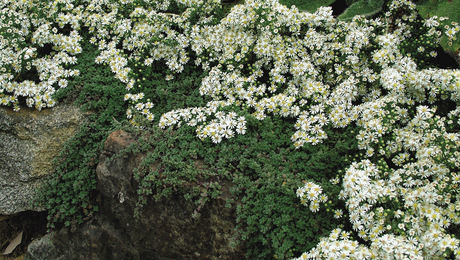













Comments
Sadly, Bluestem Nursery is defunct. Jim retired a few years ago. But the website is still a great resource of info on ornamental grasses and willows.
Log in or create an account to post a comment.
Sign up Log in